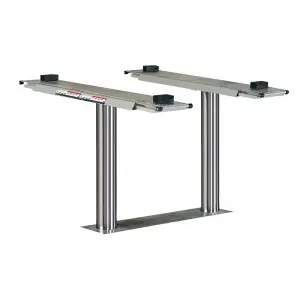Cylinders are one of the most versatile and commonly used shapes in everyday life. From the cans of soda we drink to the pipes that transport water in our homes, cylinders play a crucial role in various industries. But what exactly are cylinders and what makes them so special?

The Science Behind Cylinders: Understanding Their Properties and Applications
In geometry, a cylinder is a three-dimensional shape that consists of two parallel circular bases connected by a curved surface. The bases of a cylinder are always congruent, meaning they have the same size and shape. The height of a cylinder is the distance between the two bases.
One of the key properties of a cylinder is its volume, which can be calculated using the formula V = πr^2h, where V is the volume, r is the radius of the base, and h is the height of the cylinder. The volume of a cylinder is equal to the area of the base multiplied by the height. This formula is essential in various applications, such as calculating the volume of storage tanks or containers.
Another important property of cylinders is their surface area. The surface area of a cylinder can be calculated using the formula A = 2πrh + 2πr^2, where A is the surface area, r is the radius of the base, h is the height of the cylinder. This formula takes into account the curved surface area as well as the area of the two bases. Understanding the surface area of a cylinder is crucial in fields such as manufacturing, where the amount of material needed to produce a cylinder can be calculated.
Cylinders are widely used in engineering and architecture due to their strength and efficiency in carrying and distributing materials. In civil engineering, cylinders are commonly used in the construction of bridges and tunnels. The cylindrical shape allows for even distribution of weight and pressure, making cylinders an ideal choice for supporting structures.
In the field of thermodynamics, cylinders play a critical role in engines and machinery. Internal combustion engines, such as those found in cars and motorcycles, use cylinders to contain the combustion process. The movement of a piston within the cylinder converts the energy from the fuel into mechanical work, powering the vehicle. Understanding the properties of cylinders is essential in optimizing engine performance and efficiency.

The Science Behind Cylinders: Understanding Their Properties and Applications
Cylinders are also prevalent in everyday objects such as cans, bottles, and containers. The cylindrical shape of these objects allows for easy storage and transport of various goods. From food and beverages to cosmetics and cleaning products, cylinders are a convenient and practical choice for packaging items.

The Science Behind Cylinders: Understanding Their Properties and Applications
In conclusion, cylinders are a fundamental shape with a wide range of applications in various industries. Understanding the properties of cylinders, such as volume and surface area, is essential in engineering, architecture, and manufacturing. Their versatility and efficiency make cylinders a popular choice for carrying and distributing materials, powering machinery, and packaging goods. Next time you see a cylinder, take a moment to appreciate the science behind its shape and functionality.ac series
